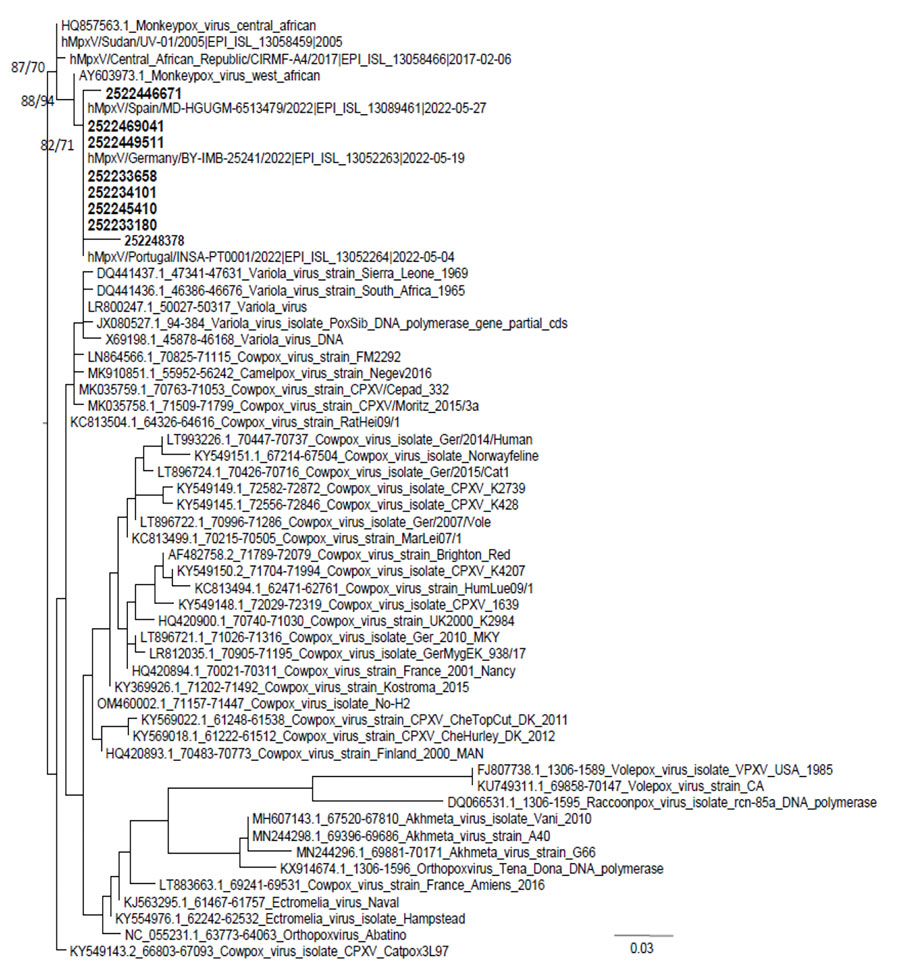Volume 29, Number 7—July 2023
Dispatch
Detecting, Quantifying, and Isolating Monkeypox Virus in Suspected Cases, Spain
Figure 2

Figure 2. Phylogenetic relationships of monkeypox virus strains from patients in Asturias, Spain (bold), and reference strains from GenBank and GISAID (https://www.gisaid.org). Alignment has 57 sequences with 262 nucleotides. Numbers in nodes are SH-aLRT support (%)/ultrafast bootstrap support (%). Scale bar indicates number of base substitutions per site.
Page created: May 29, 2023
Page updated: June 20, 2023
Page reviewed: June 20, 2023
The conclusions, findings, and opinions expressed by authors contributing to this journal do not necessarily reflect the official position of the U.S. Department of Health and Human Services, the Public Health Service, the Centers for Disease Control and Prevention, or the authors' affiliated institutions. Use of trade names is for identification only and does not imply endorsement by any of the groups named above.